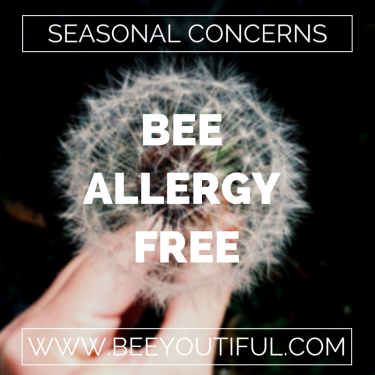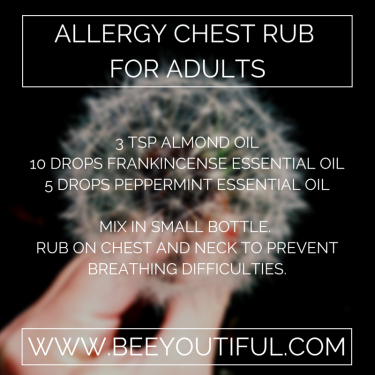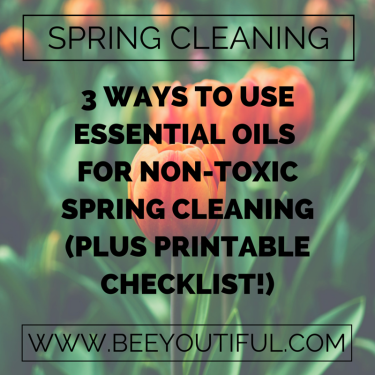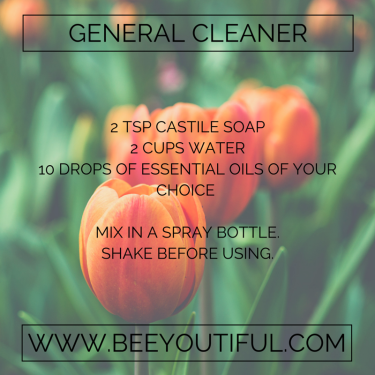This article by Tal Ewing originally appeared in our Spring 2014 catalog.
When you suffer from seasonal allergies like I do, you only want one thing: relief! You want your nose to stop running, your eyes to stop itching, and your throat to stop burning. You want to be able to go outside without having to take a pill or squirt something up your nose that you know is probably not good for you in the long run.
 But how can you get to a point in your life where you can live without the pills and the sprays? For most of my life, I thought that was impossible. I remember my parents giving me spoonfuls of liquid antihistamines and taking every over-the-counter and prescription allergy medicine on the market. I took allergy shots for almost a decade. However, nothing seemed to work long term, and the more medicine I took, the worse my allergies seemed to get.
But how can you get to a point in your life where you can live without the pills and the sprays? For most of my life, I thought that was impossible. I remember my parents giving me spoonfuls of liquid antihistamines and taking every over-the-counter and prescription allergy medicine on the market. I took allergy shots for almost a decade. However, nothing seemed to work long term, and the more medicine I took, the worse my allergies seemed to get.
When I first met Steve and Stephanie Tallent, they pretty much knew just one thing about me: Tal has bad seasonal allergies. I’m sure that my wife (the beautiful, wonderful Mary Ewing) had told them stories of my sneezing, hacking, and doctors visits, and that I was the perfect person to test a new elderberry product for them.
So, on our first meeting they came bearing a gift of a bottle of what eventually became Berry Well. It was that gift that helped lead me to finding a few natural solutions that have helped me achieve freedom from the pills and sprays. In fact, since that first meeting I have been able to stop all of my allergy medications and find true freedom from my allergies. Here’s how I did it and how you can, too!
Watch what you eat.
This is the part that most of us hate to hear, but it is vital. When I finally realized that allergies are all about inflammation, I started to look for those things in my diet that lowered my body’s natural immunity and caused it to overproduce histamines. I grew up eating the Standard American Diet (SAD). We did not know better, so by the time I met Mary, my diet consisted primarily of peanut butter and jelly, coke, and ramen noodles. (Hey, what’s a bachelor on a tight budget going to do?!) But I was also on antibiotics monthly because of it.
As we began to clean up our diets, we not only focused on eliminating things such as sugar, processed foods, and additives, but we made sure to also replace nutrients that had been missing. The body can only repair itself if given the correct building blocks, so ensuring adequate intake of healthy fats, proteins, and carbohydrates, as well as nutrient-dense fresh fruit and vegetables, give the body the proper base for health. Eliminating the non-foods or foods that trigger inflammation in the body decreases the likelihood of over-producing histamines.
Take the essentials.
Be sure that you are getting the essential vitamins you need to build a healthy immune system. I finally realized that my allergies were a symptom of my body’s inability to regulate itself. I started listening to my wife, who encouraged me to take a probiotic, since a significant portion of immunity is regulated by the gut. I began with Tummy Tuneup, alternating with Gut Guardian. I also take Digest Best with my meals; Mary tells me this is because enzymes support digestion which in turn decreases the inflammation caused by poorly digested foods.
My daily regimen also includes SuperDad, Cod Liver Oil and B-Better to support and fill in the gaps in my diet.I added these to my daily doses of Berry Well, and I began to see a significant decrease in the time I spent dealing with my allergy episodes. This was the basis for my healing regimen, but there are several things that I also use, either when I know I am prone to more symptoms or when I am actually experiencing them.
First, I will add Vitamin D3. I usually consume it in two forms, as D3 itself and also in Cod Liver Oil where it is naturally paired with Vitamin A for an added punch. Vitamin D is a natural anti-inflammatory and also works to boost the immune system. Decreasing the levels of inflammation helped to decrease my allergic responses as well. The added benefit of fewer infections also helped keep me out of the doctors office! Although the spring allows for extra sunlight, I would often have to avoid time out of doors due to higher allergens. But as I took my D3, I was able to spend more time out of doors and naturally get my sunlight as well.
Then there’s a miracle substance called Colostrum Transfer Factor. Colostrum’s active components not only boost the immune system and help make it difficult for bacteria to attach to the mucous membranes, but they also regulate the immune response. This prevents over-production of some of the lymphocytes and T-cells that cause the allergic responses. So taking Colostrum can keep you from getting sick, and makes sure that allergies are not running wild at the same time.
Optimally, we would all have access to raw honey, and pollen too. These help give small exposures to local allergens and gradually decrease the body’s reactions to them. Finding a local beekeeper that has healthy bees and then using a teaspoon of their honey every day can help decrease your allergies. If you do not have access to good quality raw honey, Bee Strong is a great alternative!
When I start to feel like I am getting an allergy attack or a cold, I take an extra dose of Berry Well accompanied by a dose of D3 and Vitamin C. This helps my body boost its ability to handle the additional stress of illness.
Calm your allergies with essential oils.
This was the last step I took, but it has been one of the most beneficial in helping me find true allergy relief. If you suffer from allergies, you realize that you cannot always control your environment. Trees are going to pollinate, flowers are going to bloom, and the house is going to need dusting. There is something that you can do, though, to help neutralize those threats to your body: fight them with essential oils. I use a combination of Eucalyptus, Frankincense, and Peppermint essential oils to calm my body when my allergies begin to flare.
During allergy season, we run the diffuser with a base of Eucalyptus almost round the clock (or use Spearmint instead for a child-friendly option). We add to it either Frankincense, Peppermint, or Rosemary, just depending on our mood that day! Frankincense and Peppermint both help tremendously when we feel short of breath or stuffy, and Rosemary has been very good for hay fever symptoms. (This bundle includes some of Beeyoutiful’s most popular essential oils for allergies, and there’s even a kid-friendly version.)
There have been times when my allergies have led to slight asthmatic symptoms as well. I used to carry an inhaler, and although I still own one for rescue purposes, I have rarely had to use it because I prophylactically use oils! We keep a small vial of pre-mixed oils that I rub on my chest twice a day when allergies are at their peak.
 Allergy Chest Rub for Adults
Allergy Chest Rub for Adults
3 tsp Almond Oil
10 drops Frankincense Essential Oil
5 drops Peppermint Essential Oil
Always make sure to check for sensitivity when applying essential oils to the skin. This blend can be rubbed on the chest and neck as needed to prevent breathing difficulties or help open up the respiratory passages.
Rubbing the feet with diluted essential oils such as Peppermint, Thyme, Rosemary, or Frankincense can also help aid in relief. This can be done prior to bed or after a warm shower.
Sometimes, when all else fails and my allergies are still bothering me, it is time to reach for extra tools. While I still increase my supplements like Berry Well when allergies strike, sometimes I just want to breathe and open up my nasal passages quickly.
Enter the neti pot or similar nasal flushing device! I include sea salt and xylitol in my mix to help soothe my nasal passages. The salt helps to mimic the isotonic fluids present in the nasal passages and decreases irritation. Xylitol helps to eliminate germs and other toxins found in the nasal passages and makes it hostile for them to try to reestablish their reign. This can be used as needed throughout the day. Discard any leftover liquid at the end of each day, unless you add a few drops of Grapefruit Seed Extract to preserve the liquid.

Nasal Wash
1/3 tsp Sea Salt
1 tsp Xylitol
1 cup warm distilled water
4 drops Grapefruit Seed Extract (optional)
Mix well and use nasal washing device to administer as needed.
While I still might have to wear that paper mask when I cut the grass, by watching my diet, supplementing vital nutrients, and using essential oils, I’ve found that my body is healthier and better equipped to handle the allergens that come my way. That’s been the key to achieving lasting allergy relief.
Tal Ewing manages shipping and inventory for Beeyoutiful. He is married to our own Mary Ewing, and is the busy father of their five adorable children. He enjoys sports, outdoor activities, working in ministry opportunities as well as studying theology. He and Mary hope to soon have acreage where they can expand their backyard chickens into a small hobby farm!

 Sunshine Day Massage Oil Blend
Sunshine Day Massage Oil Blend


 Some aromatherapy experts suggest that the beneficial chemical compounds in essential oils (especially the cold-pressed
Some aromatherapy experts suggest that the beneficial chemical compounds in essential oils (especially the cold-pressed 

 Window Cleaner
Window Cleaner General Cleaner
General Cleaner
 Furniture Polish and Duster
Furniture Polish and Duster
 For many more tips and recipes, follow our
For many more tips and recipes, follow our  But how can you get to a point in your life where you can live without the pills and the sprays? For most of my life, I thought that was impossible. I remember my parents giving me spoonfuls of liquid antihistamines and taking every over-the-counter and prescription allergy medicine on the market. I took allergy shots for almost a decade. However, nothing seemed to work long term, and the more medicine I took, the worse my allergies seemed to get.
But how can you get to a point in your life where you can live without the pills and the sprays? For most of my life, I thought that was impossible. I remember my parents giving me spoonfuls of liquid antihistamines and taking every over-the-counter and prescription allergy medicine on the market. I took allergy shots for almost a decade. However, nothing seemed to work long term, and the more medicine I took, the worse my allergies seemed to get. Allergy Chest Rub for Adults
Allergy Chest Rub for Adults






 Eucalyptus contains high levels of cineole (also known as eucalyptol), a chemical compound widely studied and shown to have a massive range of beneficial properties. Studies have shown that eucalyptus oil is:
Eucalyptus contains high levels of cineole (also known as eucalyptol), a chemical compound widely studied and shown to have a massive range of beneficial properties. Studies have shown that eucalyptus oil is:

